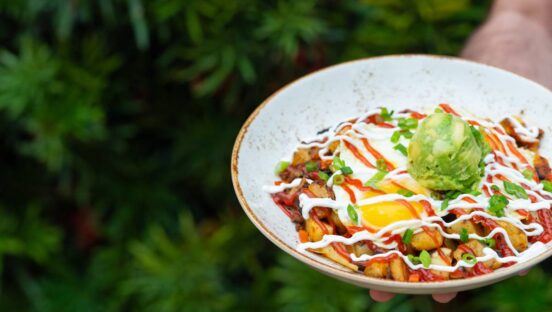





The unfortunate reality is that a lot of restaurants have quite boring or bland menu descriptions. Even in a foodie area with a lot of high-quality restaurants, some menus can come off sounding extremely bland, simply listing the ingredients located in every dish. This is a big problem and one of the reasons that people can spend a lot of time deciding which restaurant to go to or which dish to order. Nothing jumps out from the menu and commands their attention, and they end up moving on to another restaurant.
In reality, writing great and appetizing menu descriptions can captivate guests, bring in more customers to a restaurant, and get them truly excited about the food on offer. This article will explore the five key suggestions that restaurants should know about writing excellent menu descriptions.
It’s important that restaurants understand who their competition is and how they’re marketing themselves. If one pizza restaurant describes its margarita pizza as “thin base, cheese, stuffed crust” and the other describes a similar pizza as “crispy, oven-baked base topped with a thick, rich tomato sauce and melted mozzarella cheese, with a dash of basil leaf sprinkled atop,” it’s pretty evident which restaurant has a more appealing pizza. As per Frank Holster, a food writer at Custom Writing Services and Academized, “customers are more drawn to a menu description that can make them smell and taste the menu before they decide what they want.”
Menu descriptions are a bit complex and it’s best to separate the whole into three sections to make the writing process easier and so every detail is included in the description. The menu should start with the name of the dish, then the main ingredients of the meal, and the third section is the “sell copy.” The first two sections are what most restaurants go for, and the third element is what sells the menu, what makes people want to choose it. It’s possible to combine the list of ingredients and the sell copy, like in the margherita pizza example.
The menu will include a lot of words and full sentences, which means there’s a chance it can end up with some spelling or grammar mistakes. Before the printing stage of the menu, restaurant managers should look at online proofreading services and editing tools such as Simple Grad, Revieweal, Student Writing Services, and Best Research Paper Services.
Many menus will use images of meals instead of including a description, but this isn’t always a great way to go. By putting an image, it sets the customer’s expectations about what the dish will look like, and if it doesn’t look the same the customers won’t be pleased, even if it tastes great. It also gives the chef no flexibility with the presentation of the meal. Photos can also make a menu look cheap and tacky in many cases, so if images are central to a menu they should be used sparingly.
Menus should be made to look professional and engaging to customers. An image should never replace the text completely. Descriptions should be from 15 to 30 words maximum to be at an optimal length.
There is a possibility that some ingredients and items on a menu are foreign to a client, especially those who don’t understand each style of cuisine. That means clients are less likely to buy the dish since they don’t want to gamble on a meal they may not enjoy. The menu description can be used perfectly to define the taste of those ingredients, so people have a better idea of what it will taste like. That means using key terms like spicy, crunchy, earthy, hot, sweet, and more.
Mark Weir, a restaurant marketer at Assignment Help and Top Writers, says, “the point is to add a lot of descriptive words that will get clients’ mouths watering just by reading the descriptions. Editing services can help with finding key synonyms to always change up the descriptive words.”
Many customers will find these types of menu descriptions appealing and will choose to try these meals, but there are other customers who will already know what they want. The customers who already know their choice will not want to read through paragraphs of menu to find their choice. That means there shouldn’t be any menu names like “mystery meals” or “specials.” There should always be hint about what’s in the meal, such as “pizza special.”
Restaurants can really benefit from adding engaging and mouth-watering descriptions to their menus, and finding new ways to add exciting terms to a menu. The key is to put the client first to make sure that everything put down is to provide a better and more appealing client experience.
Aimee Laurence, an editor with Urgent Assignments and TAS Writing Services, shares her insights about foods and restaurants. She enjoys discovering new dishes and cuisines and reading more about the origins of popular foods. Aimee also works as a tutor for Essay Services.










